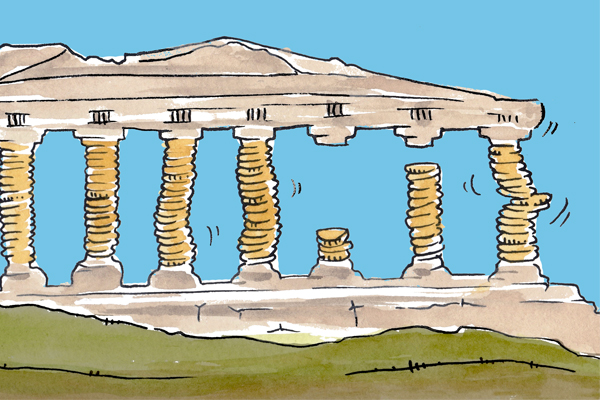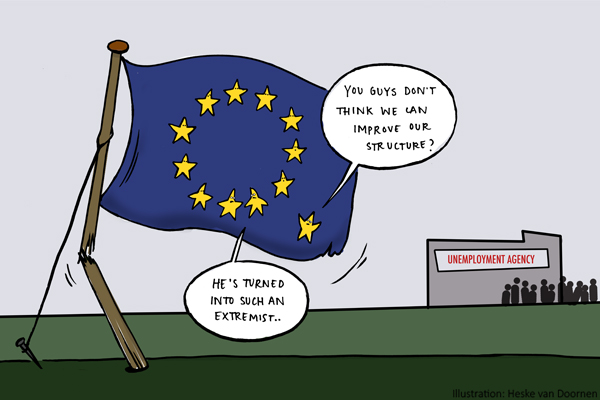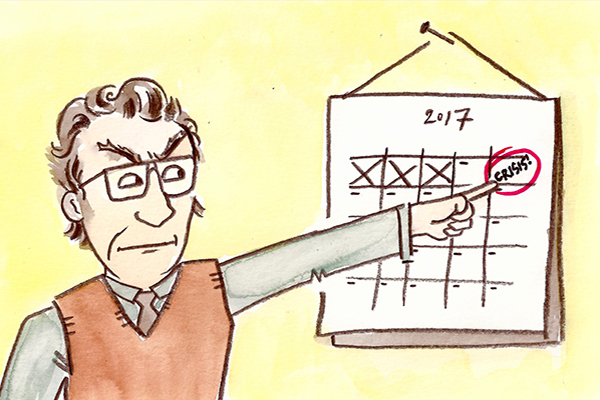An event titled Income Inequality Matters: How to Ensure Economic Growth Benefits the Many and Not the Few is not exactly what comes to mind when one thinks of the International Monetary Fund (IMF).
Yet, in April, at the latest Spring Meetings, managing director Christine Lagarde, along with the IMF’s chief economist, discussed the urgency of addressing rising income inequality and the need for redistributive policies. While IMF staff in Washington were expressing their concern with inequality, people in Ecuador, Argentina and Tunisia were taking to the streets to protest against anti-worker austerity policies their governments are implementing as part of the IMF programs.
In the 1980s and 1990s, when a series of debt crises plagued the developing world, the IMF lent money to those countries as part of what it called structural adjustment programs (SAPs). These programs, part of what is now referred to as the ‘Washington consensus’, aggressively promoted an agenda of liberalization, deregulation, and privatization, along with sharp cuts to social spending.
SAPs protected creditors and opened the doors for multinational corporations to do business in these countries, while the brunt cost of the adjustments was borne by people.
As the growth and development that was promised as a result of these programs never materialized, the IMF slowly lost some of its influence. The painful memories of the social costs that resulted from SAPs have made the IMF an extremely unpopular institution.
In recent years, the IMF has made substantial efforts to rebrand itself and create the image of an institution concerned with inclusive growth and social indicators. The IMF’s research department has dedicated a significant amount of time and space to the issue of rising inequality. This included research that showed that the fiscal consolidation and liberalization of capital accounts – policies that are at the core of IMF programs – increase income inequality.
The Fund has also examined the effect of the labor market policies it promotes and their contribution to the decline in the share of income captured by labour.
Yet, while its research department tackled questions on how to pursue both growth and inclusion, the Fund’s loan programs have not incorporated these concerns.
In the aftermath of the financial crisis in 2008, the IMF re-emerged as a major player on the global scene. The IMF stopped using the name SAP, but the structure of IMF loan conditions and the policy demands remained very similar, with the failure of previous programs all but forgotten.
To make matters worse, the IMF continues a trend of underestimating the depth of recessions caused by the austerity policies it promotes, which prolongs economic crises and increases debt burdens as economies shrink.
The IMF’s latest loan agreement with Ecuador has the typical features of a structural adjustment program. It demands massive cuts in government spending, which directly target public sector employees, along with a series of neoliberal institutional reforms.
The program continues to impose failed policies that are shown by the IMF’s own research department to increase inequality and have high social costs.
To go along with the IMF’s new image, the program does include a floor on social spending, along with a modest increase in spending on social assistance for the first year. However, the spending floor, which establishes a minimum amount of the budget to be allocated towards social assistance programs is set at a low level, which is unlikely to keep up with the increased needs that will arise from Ecuador’s recession.
The case of Argentina, which entered an agreement with the IMF in the summer of 2018, has already shown the inadequacy of social spending floors. As the economic crisis has continued to worsen throughout the program, poverty in Argentina has skyrocketed, increasing from 25.7 percent in mid-2017, to 32 percent by the end of 2018, a staggering 6.3 percentage points.
Argentina also serves as an example of the failure of IMF austerity programs, where growth projections had to be adjusted downwards by over 3 percent for a single year only 3 months after the initial agreement was signed
An in-depth study of all IMF loans approved in 2016 and 2017 has shown that 23 out of a total of 26 programs imposed austerity measures. The number of conditions attached to loans also continues to increase. Furthermore, the study has shown the inadequacy of social spending floors, which do not provide enough funding, even for the provision of basic healthcare.
The IMF has changed its rhetoric on inequality and social inclusiveness, but its operations continue to impose the same harmful policies of the past. While some symbolic steps have been taken on how to operationalize research on inequality, they have yet to be incorporated into lending agreements.
If the IMF is truly concerned about growth that benefits ‘the many,’ it needs to stop promoting policies that have time and time again hurt working people.
This article originally appeared in Equal Times.







